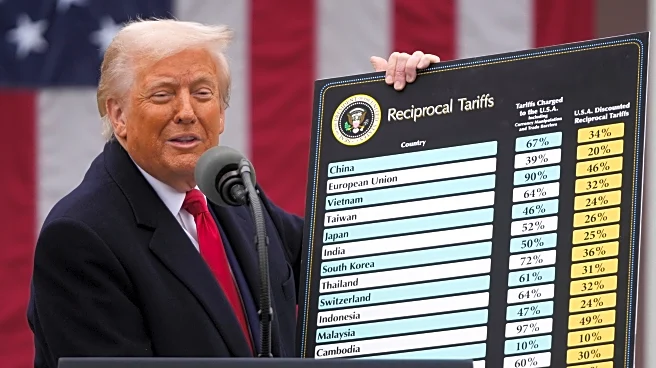What's Happening?
The U.S. soybean market has shown signs of strengthening as trade tensions with China ease. According to Karl Setzer, a partner with Consus Ag Consulting, the recent purchase of seven U.S. soybean vessels by China, along with some wheat, has contributed
to this positive trend. The U.S. harvest is nearing completion, and while there was an increase in farmer selling during last week's rally, it did not meet buyers' expectations. The firming of U.S. basis values last week was attributed to slow deliveries and increased demand, which has put pressure on domestic processing margins. In the broader agricultural market, December CBOT wheat saw a slight decrease, while December live cattle and January feeder cattle experienced price increases.
Why It's Important?
The strengthening of the U.S. soybean market is significant as it reflects the impact of international trade relations on domestic agriculture. The easing of trade tensions with China, a major buyer of U.S. agricultural products, could lead to increased export opportunities and improved market stability for American farmers. This development is crucial for the U.S. agricultural sector, which has faced challenges due to fluctuating commodity prices and trade uncertainties. The firming of basis values and increased demand may also benefit domestic processors, although they face pressure on margins. Overall, this trend could provide a much-needed boost to the agricultural economy, potentially leading to increased profitability for farmers and related industries.
What's Next?
As the U.S. harvest concludes, market participants will likely monitor further developments in trade relations with China and other key markets. The continuation of positive trade dynamics could sustain or enhance the current market strength. Additionally, stakeholders will be attentive to any policy changes or economic indicators that might influence agricultural exports and domestic demand. The agricultural sector may also need to adapt to potential shifts in global trade patterns and consumer preferences, which could impact future market conditions.















